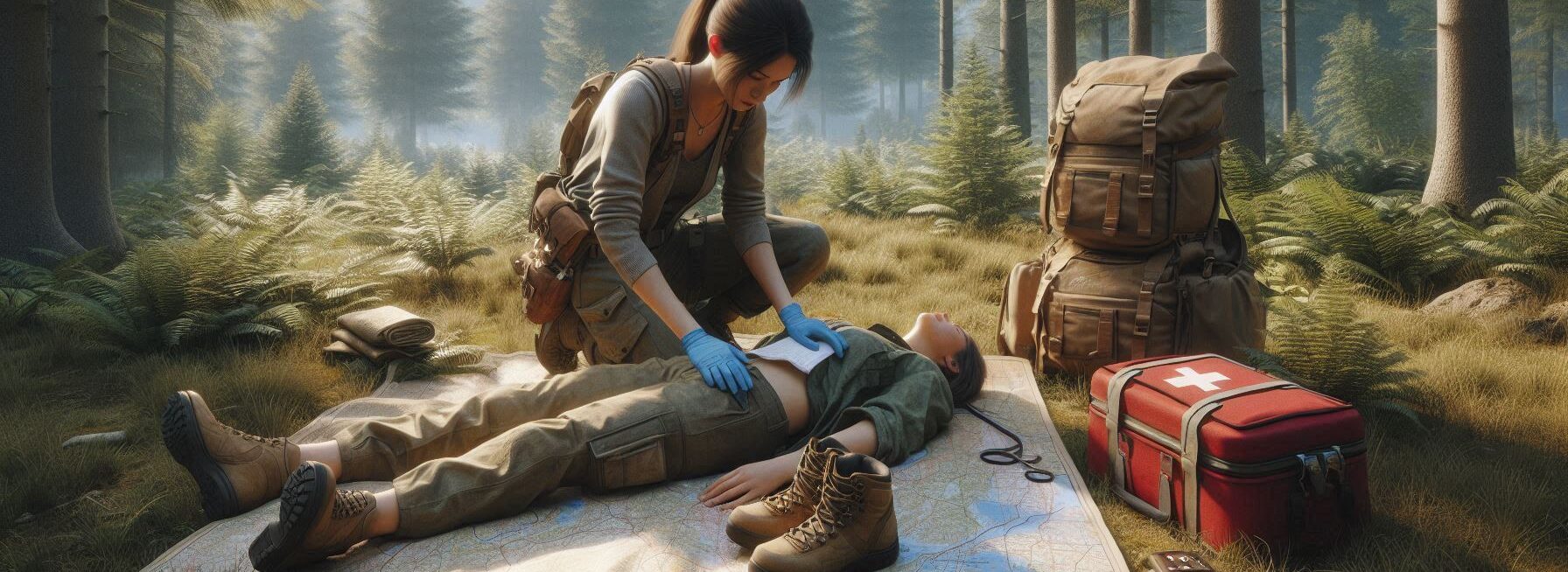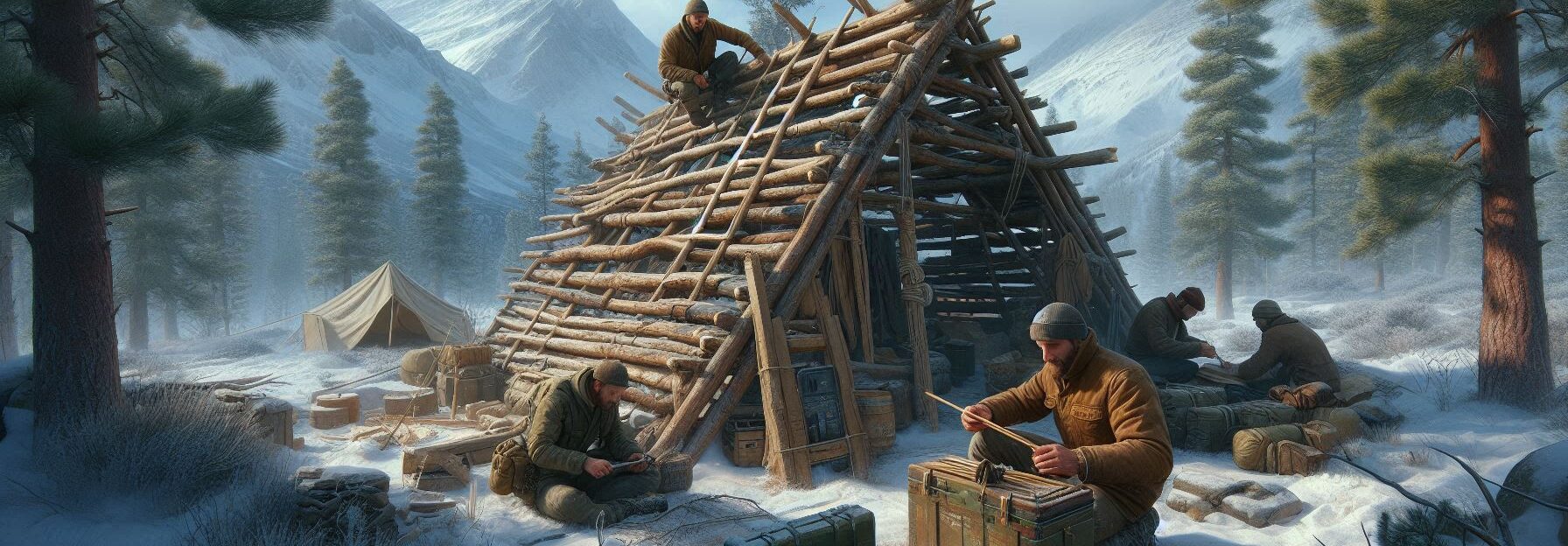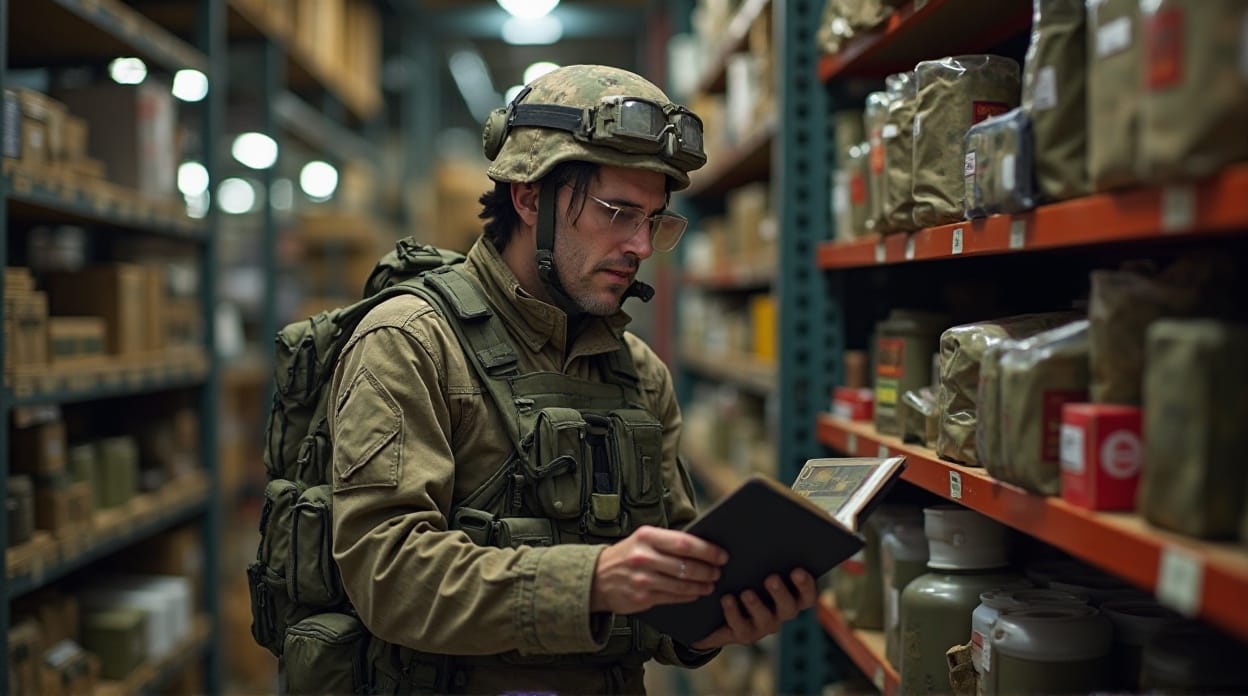Please Note: This post may contain affiliate links. If you click one of them, we may receive a commission at no extra cost to you. As an Amazon Associate, I earn from qualifying purchases.
Last Updated on November 1, 2025 by Kevin Collier
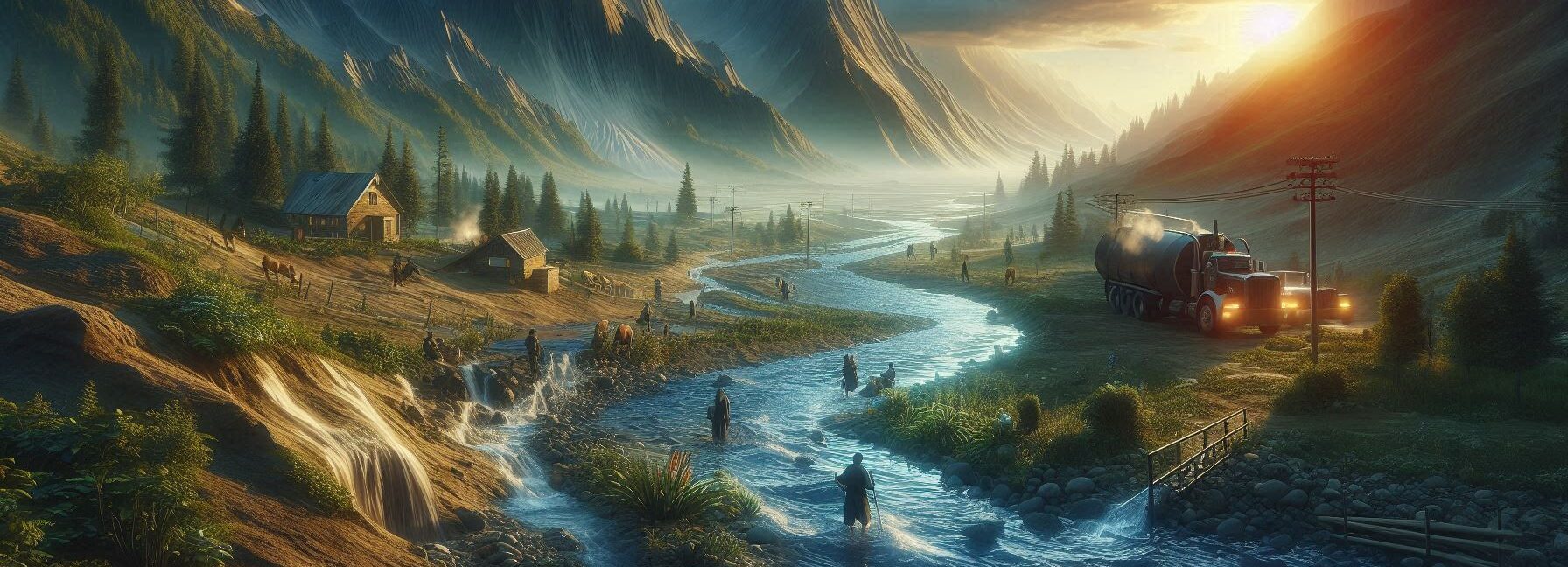
Top Takeaways and Key Concepts
- Locate Water Sources: Follow animal tracks, green vegetation, and downhill paths.
- Collect Rainwater: Use tarps or plastic sheets to gather precipitation.
- Dig for Water: In dry riverbeds, dig at low points to find moisture.
- Trap Plant Moisture: Cover tree branches with plastic to collect transpired water.
- Purify Collected Water: Boil, filter, or use purification tablets before drinking.
Think about this: You are hiking in the woods, where there are big trees and birds singing. Everything is great until your throat starts to feel like it's in a small desert.
You keep walking, but oh no! You forgot to bring water. That sensation of dread in your stomach? Yes, that's panic. What will you do if you don't have water?
Take a big breath. You can make it through this. Let's talk about how to find water when you're in the outdoors. It's really vital to drink enough water, otherwise you'll turn into a raisin.
Take a look around. Nature can be your best friend. Streams, rivers, and even puddles can help you find your way. If you see a stream, yay! But always look at the water first. Wait if it appears dirty. You can also search for plants.
Some plants can store water. This is what cacti are known for. You may take a small portion and squeeze it, much like you would a sponge. But be careful; not all plants are safe to drink from.
If you see soft earth, dig a little. Sometimes, you can locate water underneath that is simply waiting to be found. Pick it up, but make sure it's clean. If you can, always strive to clean the water.
Look for animal footprints as well. They generally go to places where there is water. Water is frequently close by when animals are around. Believe me, it can help you not feel like a dried-up sponge.
Stay calm. You can do it. It's fun to go on adventures, but it's best to plan beforehand. Finding water will help you enjoy your hike and keep that desert feeling away. So get out there, drink plenty of water, and enjoy every second!
Contents of This Page
*** Shop for Survival Gear - Tools - Kits ***
Survival Gear - Bags and Backpacks - Knives - Boots/Footwear - Communication
Outdoor Cooking - Gloves - Hydration - Dry Boxes - Water Filtration Systems
Tents - Sleeping Bags - First Aid Kits - Multi-Tools - Flashlights - Fire Starters
Navigation - Survival Food - Night Vision - Headlamps - Stun Guns - Binoculars
1. Understanding Your Environment
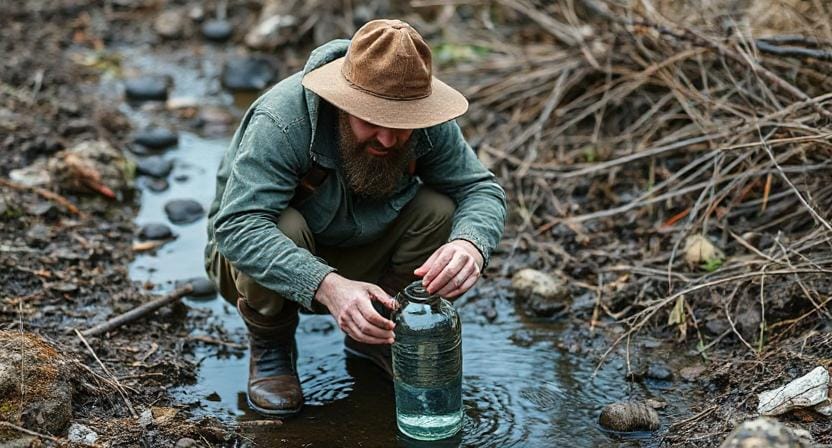
Before you start channeling your inner Bear Grylls, you need first take a moment to get to know your surroundings. varied types of land provide you varied hints on where to find water.
If you're traveling through a thick forest, there's a strong possibility you'll find streams or rivers concealed among the trees. If only they weren't so good at concealing!
But things get harder in deserts. You would think that “no water means no fun,” but take a closer look! Animals often know where to find water. If you follow their footprints, you could find an oasis or at least a puddle big enough to drink from.
If you're camping in a city, look for public fountains or ask locals for help. It may sound unusual, but people can also give you information!
2. Water Sources in Nature

Let's examine what nature has to offer when it comes to getting water. It's easy to think about streams and rivers, but don't forget about lakes and ponds!
Just keep in mind that standing water can be home to all kinds of creepy-crawlies that would make wonderful bad guys in a horror movie but aren't good for drinking.
If you live near mountains or hills and it rains, seek for streams that are trickling. They are usually cleaner than other sources because rocks and soil naturally filter the water.
But hold on! Before you jump into any body of water like an aquatic superhero, always filter or purify your discoveries. Otherwise, you might as well be playing roulette with microorganisms.
It's interesting that you may also collect dew early in the morning. Use cloth or leaves to soak up those drops that are stuck to grass blades. Just think of yourself as a sponge for Mother Nature!
3. Searching for Water

Now it's time to get serious: occasionally you have to dig for water! This may sound more like something you'd do when playing a tough game of backyard archeology than learning survival skills, but hear me out.
In places with sandy soil or dried-up riverbeds (you know, the places where dreams go when they run out of water), digging down about two feet may show you groundwater that is quietly waiting below the surface.
Imagine how great it would feel to do this—it's like being Indiana Jones without having to dodge rocks!
When you're done digging your tiny pit stop for water, line it with clean things like leaves or linen. Then, when it rains, it will fill up (because who doesn't enjoy free refills?).
4. Getting Rainwater
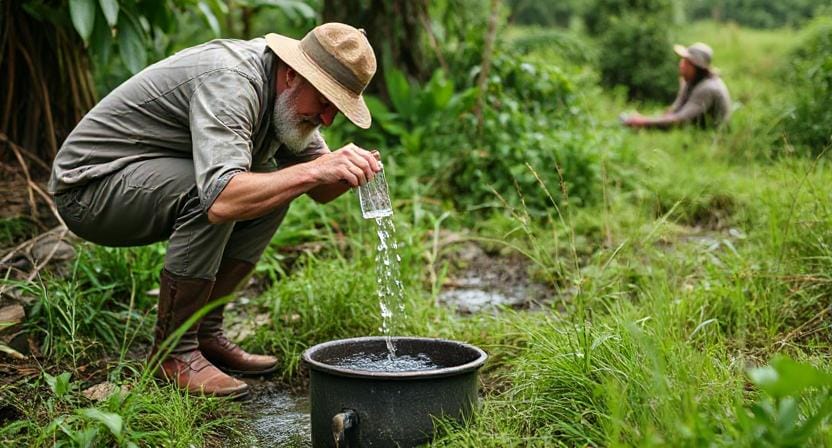
Let's talk about how great it is when Mother Nature decides she wants us to drink more water! If rain is in the forecast for your outdoor activity (and if only someone had told me that before I forgot my umbrella at home), take advantage of the chance.
To collect rainwater quickly, build temporary gutters out of tarps or big leaves that lead to containers. Anything from empty food cans to backpacks will work as long as they are clean (believe me, no one wants soup-flavored water).
And here's a suggestion from a pro: if there isn't any rain in the forecast, put out bowls overnight when dew accumulates. You'd be surprised at how much moisture collects without us even recognizing it!
5. The Art of Survival Skills
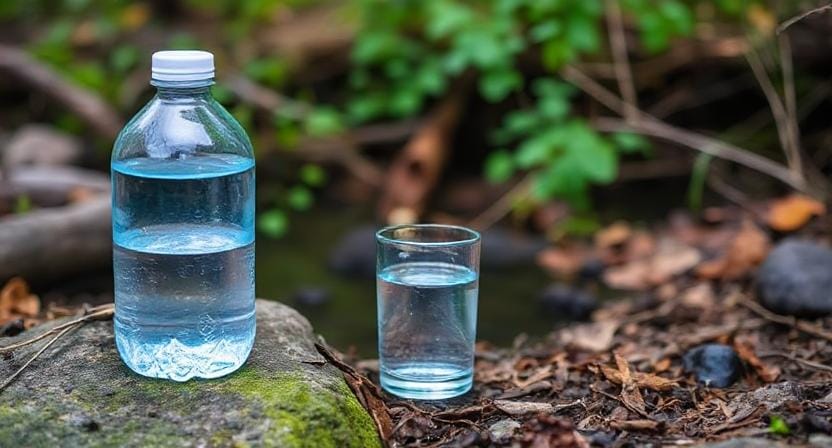
But to be honest, it's not only about obtaining water; it's also important to know how to gather and preserve it properly. Always put cleanliness ahead of quantity because drinking unclean water can make survival a lot worse faster than I can say “stomach bug.”
Use any containers you have on hand. A backpack bladder works great if you clean it well after your trip. Keep them out of the sun whenever you can, though, because heat makes things evaporate faster than my excitement fades during Monday meetings.
Let's take a moment to think about this. You're out there, maybe camping or trekking, and you finally discover some water. That's great! But wait a minute. It's hard not to want to drink it all right immediately, isn't it?
But here's the deal. You might run out too soon if you drink every last drop. Think about how thirsty you would be tomorrow if you couldn't find any water. That would be a bummer!
Drink tiny amounts of water when you don't have a lot. You're making every drop count by dragging it out. You should save a little bit for later, just in case. It's like reserving your favorite snack for later. You shouldn't eat it all at once!
Try to plan ahead if you're going to be gone for a few days. Find places where there might be more water. Is there a creek close by? Do you see any signs of animals? Be on the lookout. Nature gives hints.
Also, if you can, write down where you found the water. If you need to replenish, you can go back that way. This small tip can help a lot when you really need it.
It's hard to worry about water. It helps to stay cool. Keep in mind that being ready is the best thing. You can do this. Have fun in the woods, but be smart about how you use your resources. A little forethought may make your trip more exciting and safe!
Frequently Asked Questions
How can I identify potential natural water sources?
Look for animal tracks, lush green vegetation, and lower terrain, as these often indicate nearby water.
Is rainwater safe to collect for drinking?
Yes, rainwater can be collected using tarps, plastic sheets, or containers, but purification before drinking is still advised.
Can digging provide water in dry areas?
Yes, digging in dry riverbeds or low sandy areas may reveal moisture and seepage that can be collected.
How do plants provide usable water?
Some plants release moisture; covering leafy branches with plastic can trap condensation for collection.
Should all collected water be purified?
Yes, always purify any water found outdoors to remove harmful pathogens, even if it looks clean.
What methods are effective for purifying water in the wild?
Boiling, filtering, and purification tablets are reliable field options for making water safer to drink.
How can I conserve limited water supply?
Drink small amounts over time and avoid overexertion to reduce water loss and extend your supply.
Suggested Resources:
Survival Tips: How To Find Water
https://www.survivaltips.com/how-to-find-water
The Ultimate Guide to Finding Water in the Wild
https://www.wildlife.org/ultimate-guide-finding-water
Water Purification Techniques for Outdoor Adventures
https://www.outdooradventures.com/water-purification-techniques
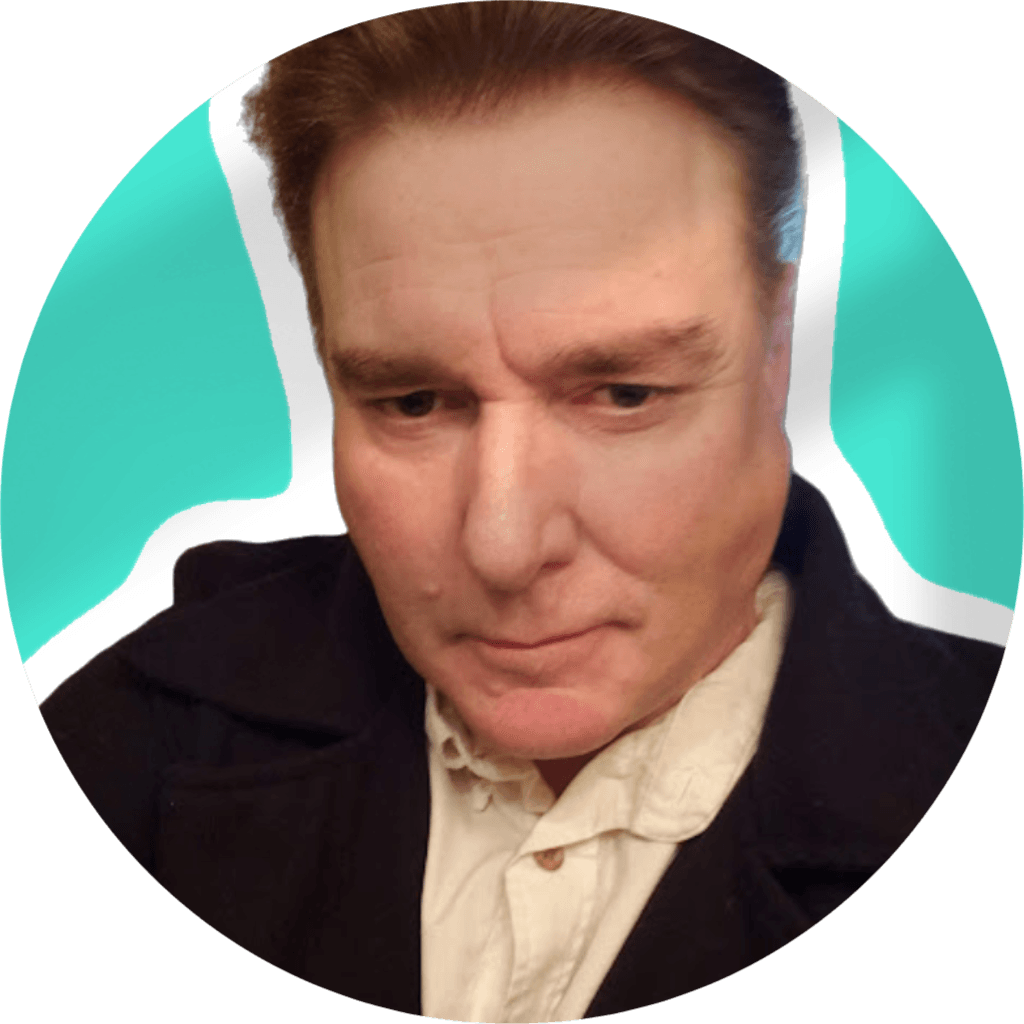
Kevin Collier is a seasoned survivalist and expert in prepping and homesteading, contributing to WiseSurvive.com. With a deep-rooted passion for self-sufficiency and outdoor survival skills, Kevin shares practical advice, strategies, and resources to help individuals prepare for any challenge. His informative articles cover a range of topics, from essential survival techniques to sustainable living practices, empowering readers to thrive in any situation. Whether you're a novice or a seasoned prepper, Kevin's insights will inspire you to take charge of your readiness and build resilience for the future.

